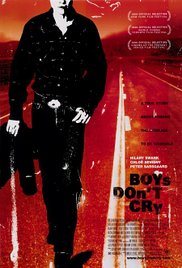Portrayals of Adolescent Females in Teen Films
The Genre
Coming-of-age films, or otherwise known as teen films, focus on the growth of a teenage protagonist from youth to adulthood [1].
The Misrepresentation
The female teenage protagonists in mainstream coming-of-age films are similar. They are almost always caucasian, conventionally attractive, heterosexual, and middle/upper class. There appears to be a missing representation of women of colour, women from poor backgrounds, and women who are questioning their sexuality.
It is relevant to note that when films do go against hegemonic trends, they tend to only do so in a singular way. To expand, if the teenage girl protagonist is a person of color, her character will also be heteronormative, or if there is a homosexual girl, her character will be caucasian. It is very rare for intersectionality to be evident in the protagonists in teen films.
Similar to a missing representation of all female teens, many adolescent experiences are also not represented in mainstream films. The story lines are usually set in a heteronormative and socioeconomically privileged society that is centred on a patriarchal nuclear family ideal [2].
When the protagonist is female in these films, the plot is usually centred on her quest for a dream boy or social aggression with the goal of popularity. A study by Elizabeth Behm-Morawitz and Dana E. Mastro also revealed that female characters in teen movies are more likely to engage in and be rewarded for socially aggressive behaviours [3]. This focus on the “mean girls” of female teenage friendships seems to dominate teen film portrayals of girls, when, in reality, this stereotype does not reflect the real variety of female friendship roles and the positive attributes of these friendship networks [4] [5]. From the perspective of social cognitive theory, it would be expected that exposure to such messages among the appropriate audience could potentially result in the development of unfavorable beliefs about female friendships and negative attitudes toward women in general [6].
Female Sexual Agency
There is little representation of female sexual desire or agency in the genre of teen film. This has been identified by feminist educator Michelle Fine as “the missing discourse of desire” [7]. Female sexual desire in these films is usually dominated by the threat of disease or pregnancy, or even replaced by vague references to morality and self-respect [8]. While teenage boys are often portrayed as sex-crazed hormonal beings, we rarely see teenage girls daydreaming of sexual interactions. The nature of the countless films about adolescent boys and their pursuit of losing their virginity, including Superbad and American Pie, reinforces the traditionally feminine role as “gatekeeper” of sexuality [9]. No matter how empowered or sex-positive the representation of an adolescent female may be, her story is subordinate to those of the boys around her [10].
There are a handful of independent films that do not follow this mainstream narrative or plot. Films such as The Diary of a Teenage Girl [11] or Turn Me On, Dammit! [12] share the taboo subject matter of the sexual awakening that occurs in the reality of girlhood, along with the underrepresentation of sexual desires amongst girls.
Examples
Mean Girls is an example of a mainstream teen film that depicts social aggression amongst teen girls. The main character, Cady Heron, sacrifices her friendships, grades, and relationship with her parents in order to be a part of the A-list clique referred to as “the plastics” and to obtain her dream boy, Aaron Samuels. Cady, and the rest of “the plastics” are all caucasian, heteronormative, and middle/upper class.
Sex drive is an example of a mainstream teen film with the plot of a group of teenage boys and their quest of losing their virginities. This plot is anything but unique. There are countless films based on the same idea, such as Superbad and American Pie.
The films Girlhood [13] and Boys Don’t Cry [14] are examples of films that represent non-hegemonic protagonists. The main character in Boys Don't Cry is a transgender male, and the plot follows the challenges and tragedies he faces as a result. The main character in Girlhood in a black teenage girl who faces an extensive identity crisis.
The Consequences
Mainstream teen films construct and reinforce viewers’ attitudes towards sexuality, race and power. According to Bandura's social cognitive theory, messages in the media act as a source for the acquisition of “gender-linked knowledge and competencies” and the development of expectations of gender roles, standards for self-evaluation, and beliefs of oneself’s potential for success [15]. This theory is supported by past research that indicates that gender portrayals in films affect their audiences in regards to effecting their real-world gender-based attitudes, beliefs, and behaviours [16] [17] [18]. These severely limited portrayals of teen girls have real effects on teen girls who are not represented by these films. On a greater scale, these representations also have an impact on society as a whole in regards to reinforcing Western standards of beauty, heteronormative ideals, etc.
The impact these films have are specifically significant because their target demographic is very impressionable. Consequently, the representations of gender roles in these films can alter both the male and female teen audiences’ beliefs about friendships, social aggression, and roles of women in society.
- ↑ https://en.wikipedia.org/wiki/Coming-of-age_story
- ↑ http://stars.library.ucf.edu/cgi/viewcontent.cgi?article=2460&context=honorstheses1990-2015
- ↑ https://pdfs.semanticscholar.org/bba6/1cbce808472d86ad87b13d16f809b5ba39de.pdf
- ↑ https://www.tandfonline.com/doi/abs/10.1207/S1532480XADS0401_2
- ↑ https://academic.oup.com/sf/article/79/1/351/2234026
- ↑ https://pdfs.semanticscholar.org/bba6/1cbce808472d86ad87b13d16f809b5ba39de.pdf
- ↑ https://scholarworks.gsu.edu/cgi/viewcontent.cgi?article=1012&context=wsi_theses
- ↑ https://books.google.ca/books/about/Talk_about_Sex.html?id=jBWYvXt18CwC
- ↑ https://scholarworks.gsu.edu/cgi/viewcontent.cgi?article=1012&context=wsi_theses
- ↑ https://scholarworks.gsu.edu/cgi/viewcontent.cgi?article=1012&context=wsi_theses
- ↑ https://en.wikipedia.org/wiki/The_Diary_of_a_Teenage_Girl
- ↑ https://en.wikipedia.org/wiki/Turn_Me_On,_Dammit!
- ↑ https://en.wikipedia.org/wiki/Girlhood_(film)
- ↑ https://en.wikipedia.org/wiki/Boys_Don%27t_Cry_(film)
- ↑ https://www.ncbi.nlm.nih.gov/pubmed/10560326
- ↑ https://www.jstor.org/stable/1129444
- ↑ https://link.springer.com/article/10.1007/BF00287341
- ↑ https://www.tandfonline.com/doi/abs/10.1080/23808985.1996.11678930



